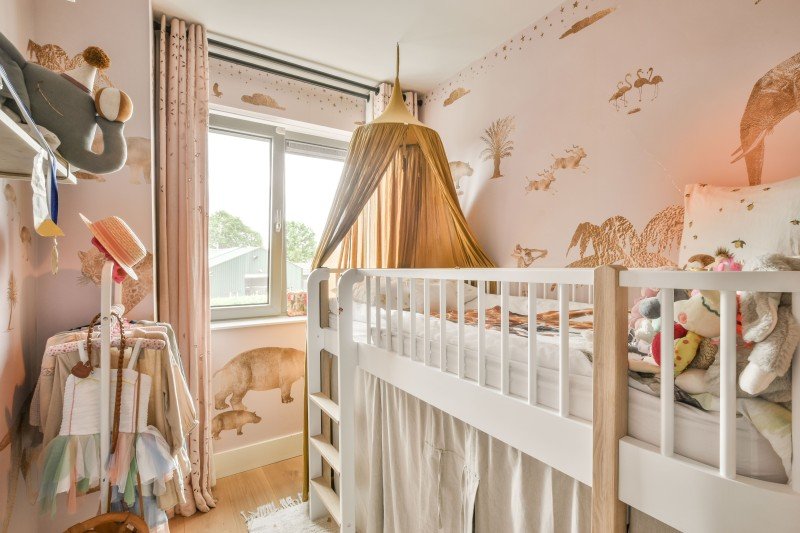What Is Kids Bunk Bed And Why You Should Consider Kids Bunk Bed
The Ultimate Guide to Kids Bunk Beds: Maximizing Space and Fun
With the rise of vertical living and smaller sized spaces, the appeal of bunk beds has skyrocketed amongst households. Bunk beds not just use a useful sleeping option, especially in shared spaces, but they also bring a component of enjoyable into a child's life. This comprehensive guide delves into the functions, advantages, and considerations of kids' bunk beds, making it easier for parents to choose the right bed for their children.
Features of Kids Bunk Beds
Bunk beds are flexible pieces of furnishings that serve more than a single function. Here are some essential functions to consider:
Feature
Description
Product
Bunk beds can be constructed from wood, metal, or a mix of both, providing varying levels of toughness and style options.
Safety Features
Many bunk beds come equipped with guardrails, safe and secure ladders, and capped supports for security, particularly crucial for young kids.
Style Variety
Choices vary from traditional designs to modern-day designs, guaranteeing a match for any room design.
Space-Efficiency
Bunk beds make use of vertical space, making them perfect for smaller spaces.
Convertible Options
Some designs can be transformed into 2 separate beds, providing flexibility as kids grow.
Storage Solutions
Some bunk beds come with integrated storage drawers or racks, assisting to keep the space arranged.
Benefits of Kids Bunk Beds
Buying a bunk bed features numerous benefits:
- Space Saving: Bunk beds take full advantage of flooring space, permitting more play location or storage options.
- Enjoyable Factor: With a bunk bed, kids have a place that promotes imagination and companionship during sleepovers or playdates.
- Cost-Effective: Instead of buying two different beds, a bunk bed can accommodate two kids at once, saving money in the long run.
- Versatility: Many bunk beds can be disassembled or converted into twin beds, making them a long-term financial investment as children's needs alter.
- Social Interaction: Bunk beds encourage household bonding and friendships, supplying an inviting space for children to share stories and laughter.
Factors to consider When Choosing a Kids Bunk Bed
When choosing the perfect bunk bed for a kid, moms and dads ought to consider various aspects:
- Safety Standards: Ensure that the bunk bed abide by security policies and includes important safety functions.
- Age Appropriateness: Different designs accommodate various age. For example, conventional bunk beds might not be appropriate for more youthful children.
- Space Dimensions: Measure the bedroom to make sure the bunk bed fits appropriately, allowing for space to move conveniently.
- Weight Capacity: Consider the weight load of each bed and ensure it accommodates the child's weight comfortably.
- Style Preferences: Letting children take part in the choice process can help them feel more thrilled about their brand-new bed.
Kinds Of Kids Bunk Beds
Bunk beds can be found in various designs and setups to match various requirements:
Type
Description
Standard Bunk Bed
A traditional design with one bed stacked on top of another, generally utilizing a ladder to access the top bunk.
L-Shaped Bunk Bed
Functions 2 bunk beds connected in an L-shape, often more large and appropriate for kids sharing a space but requiring a bit more space.
Triple Bunk Bed
Consists of three stacked beds, ideal for optimizing sleeping plans in very restricted spaces.
Loft Bed
A raised bed with space below that can function as a play location, research study corner, or additional storage.
Futon Bunk Bed
Integrates a bunk bed on the top with a futon or couch below, making it great for pajama parties and making the most of space use.
Convertible Bunk Bed
Can be separated into two individual beds, using versatility as kids's requirements alter.
Taking Care Of Kids Bunk Beds
Preserving bunk beds is crucial for guaranteeing durability and safety. Here are some easy care practices:
- Regular Inspections: Check the bed routinely for loose screws and tightened bolts to make sure stability.
- Cleanliness: Keep bed linen tidy and fresh, rotating bed mattress for even wear.
- Guardrails: Ensure guardrails are secure and in location, especially if children tend to move a lot in their sleep.
- Air Circulation: Ensure the bed has adequate air flow, avoiding wetness accumulation that can result in mold or mildew.
Frequently Asked Questions About Kids Bunk Beds
Q1: At what age can a child safely use a bunk bed?
A1: Generally, kids aged 6 and older are thought about safe to use the upper bunk due to the height and stability elements involved.
Q2: Can I place a bunk bed near a window?
A2: It is suggested to prevent placing a bunk bed near windows to minimize the threat of falling or injuries.
Q3: Are bunk beds safe for more youthful kids?
A3: While some contemporary bunk beds feature security features accommodating more youthful kids, it is typically recommended to wait up until they are older, usually over 6 years.
Q4: What is the typical weight limit for leading bunks?
A4: Weight limitations vary by model however normally vary from 150 to 250 pounds. Always describe the manufacturer's requirements.
Q5: How often should I examine the bunk bed's security features?
A5: It is suggested to perform a safety check every couple of months or whenever you discover any signs of wear.
Kids' bunk beds work as a tactical solution for families seeking to take full advantage of space while providing a fun and interesting sleeping environment for their kids. With anabellesully.top of options offered— from basic designs to loft beds— moms and dads have the freedom to select something that satisfies their family's specific needs. By thinking about vital aspects such as security, space suitability, and their children's preferences, parents can make an informed choice, guaranteeing that each child is delighted about bedtime while gaining from a well-organized space.
